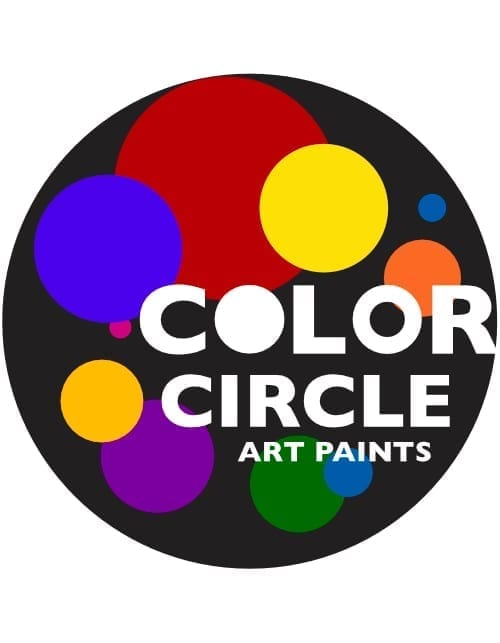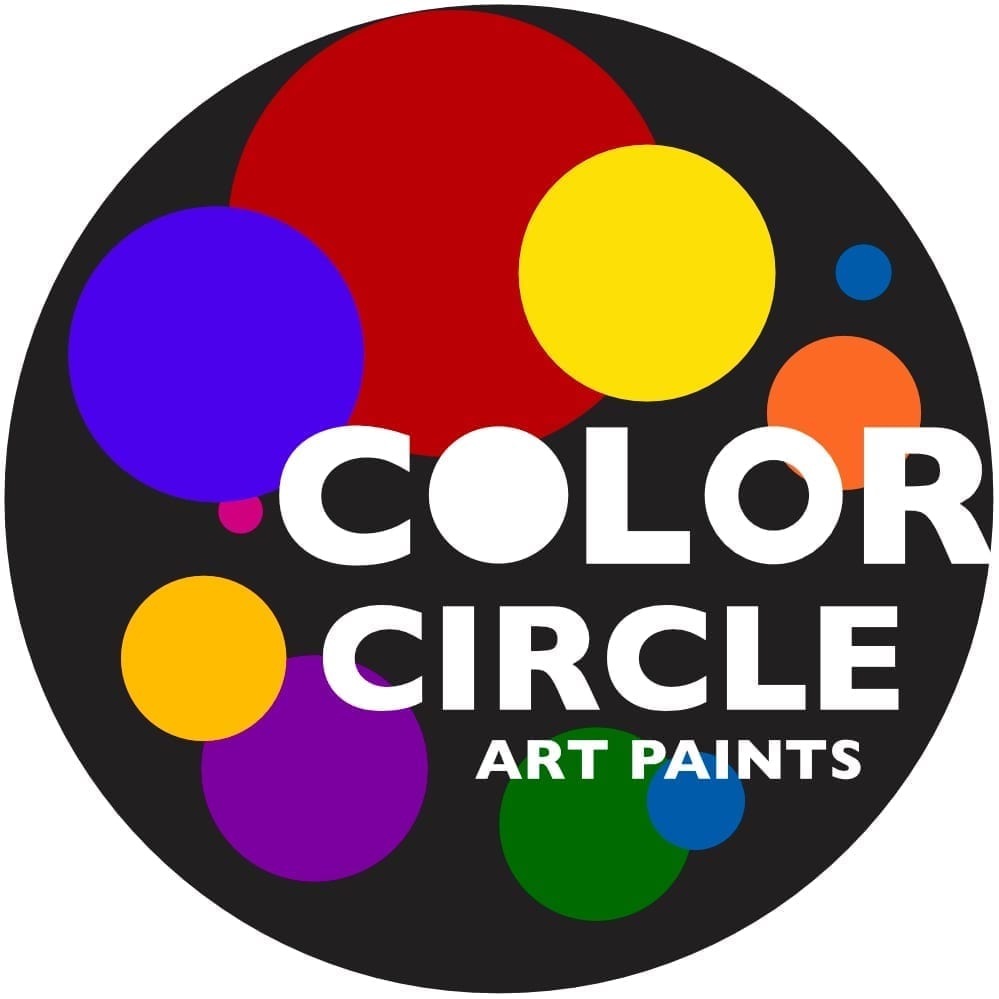Transparency & opacity
Transparent paint
The background is not covered by transparent paints, but shines through more or less depending on the degree of transparency.
The more transparent the paint is, the more brilliant and colorful the result will be if several layers are painted on top of each other (glazed).
COLOR CIRCLE ART PAINTS are all equally transparent (except for opaque white and black).
The advantages of a consistently transparent color palette are best seen in the finished painting:
All colors have the same brilliance, luminosity and color depth.
The colors appear more pure.
Glaze
A translucent layer of paint is called a glaze.
Several glazes painted on top of each other in different colors result in new shades when optically mixed on the support.
With glazes – especially with COLOR CIRCLE ART PAINTS – you can achieve an enormous variety of mixed tones, as all colors (except black and white) are equally transparent!
Always start with the light color first!
After drying, apply several more glazes as required.
Covering or opaque paint
Painting materials that no longer allow the background to show through are referred to as covering or opaque.
To make paints opaque, you need to add titanium dioxide white, chalk and other opaque materials, for example.
There are also pigments that are opaque in themselves, for example most iron oxide pigments.
Mixing
All COLOR CIRCLE ART PAINTS and binders are completely intermixable.
The colors already contain a binder, so you can paint directly from the bottles.
Transparent paints become opaque paints when you add our Opaque white 16.
If you want to use additional additives from other manufacturers, you should definitely test them with the COLOR CIRCLE ART PAINTS beforehand!
In any case, these additives should be acrylic-based.
Gum arabic, for example, is not compatible with acrylic.
You can usually paint with our colors over layers of paint from other manufacturers (except for oil painting). Please test!
We accept no responsibility for substrates and paint layers that have not been tested by us.
Drying
Acrylic binder dries quickly.
If you want to use the colors on the palette for longer, add more water to the mixed colors than binder.
Or use Acrylic binder 2, which dries less quickly than Acrylic binder 1.
Use well-sealable containers for your paints (we also supply practical jars for this purpose).
You can no longer use the paints on the palette after they have dried, unlike watercolors (with the easily soluble gum arabic or resolvable acrylics) as a binder.
When developing paints, a decision has to be made between the easy solubility of the binder and the adhesive strength on a wide variety of painting supports such as paper and metals.
Both is not possible!
Shelf life
Preservatives are needed to stop or delay the degradation process of paints.
Natural raw materials are affected by degradation much more quickly due to their impurities. Molds spread and the solution begins to ferment or settle.
Synthetic raw materials are less prone to molds and similar degradation reactions, but also change (see acidity).
The acidity of a paint is also an important factor. If the solution is too acidic, for example, flocculation can occur.
A few simple measures can be taken to stabilize the shelf life:
• Close paint bottles tightly after use
• Never dip the brush into the paint bottles
• Always store paints in a cool place away from light (even if COLOR CIRCLE ART PAINTS are extremely light fast – the bottles and labels do change…)
COLOR CIRCLE ART PAINTS do not contain any additional preservatives apart from alcohol (ethanol).

